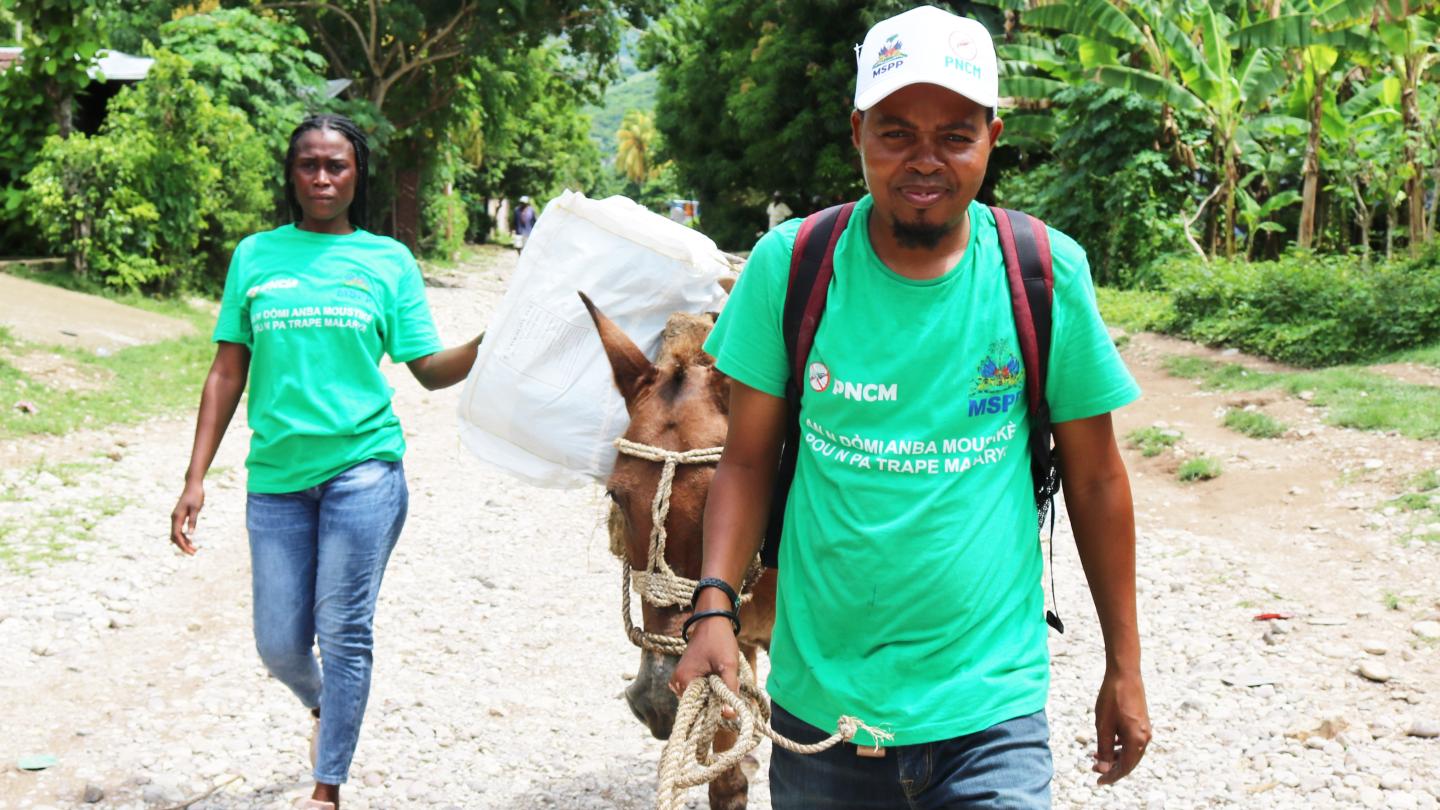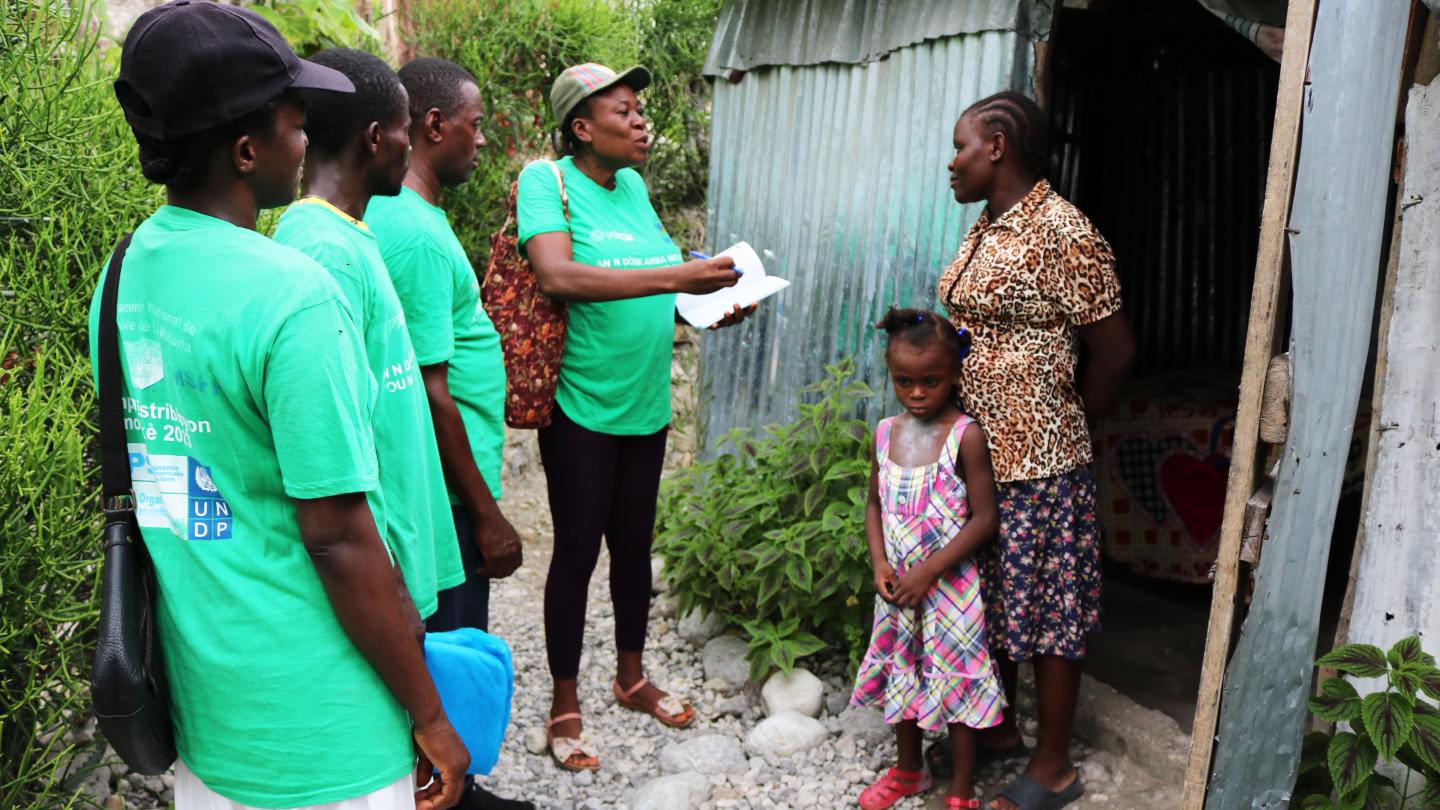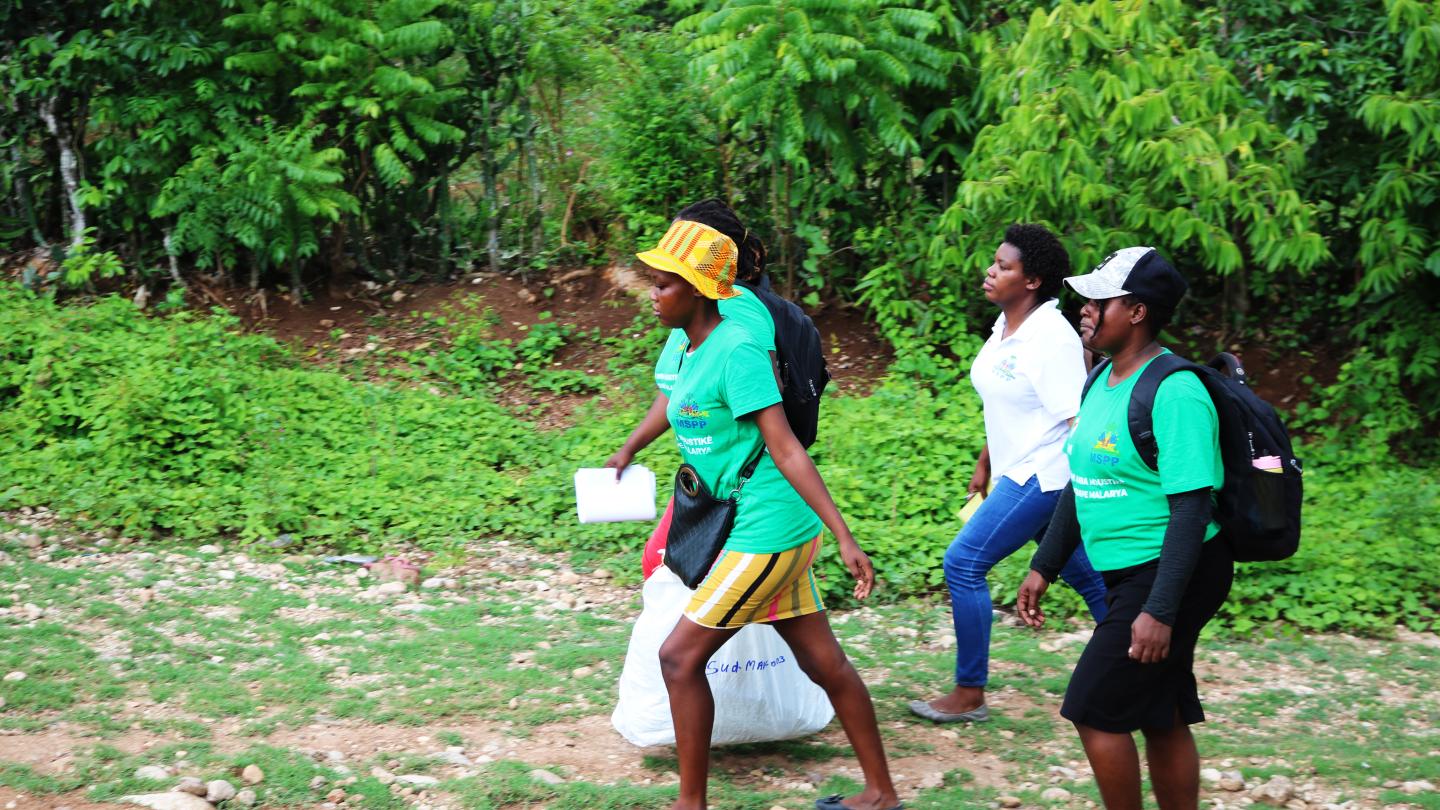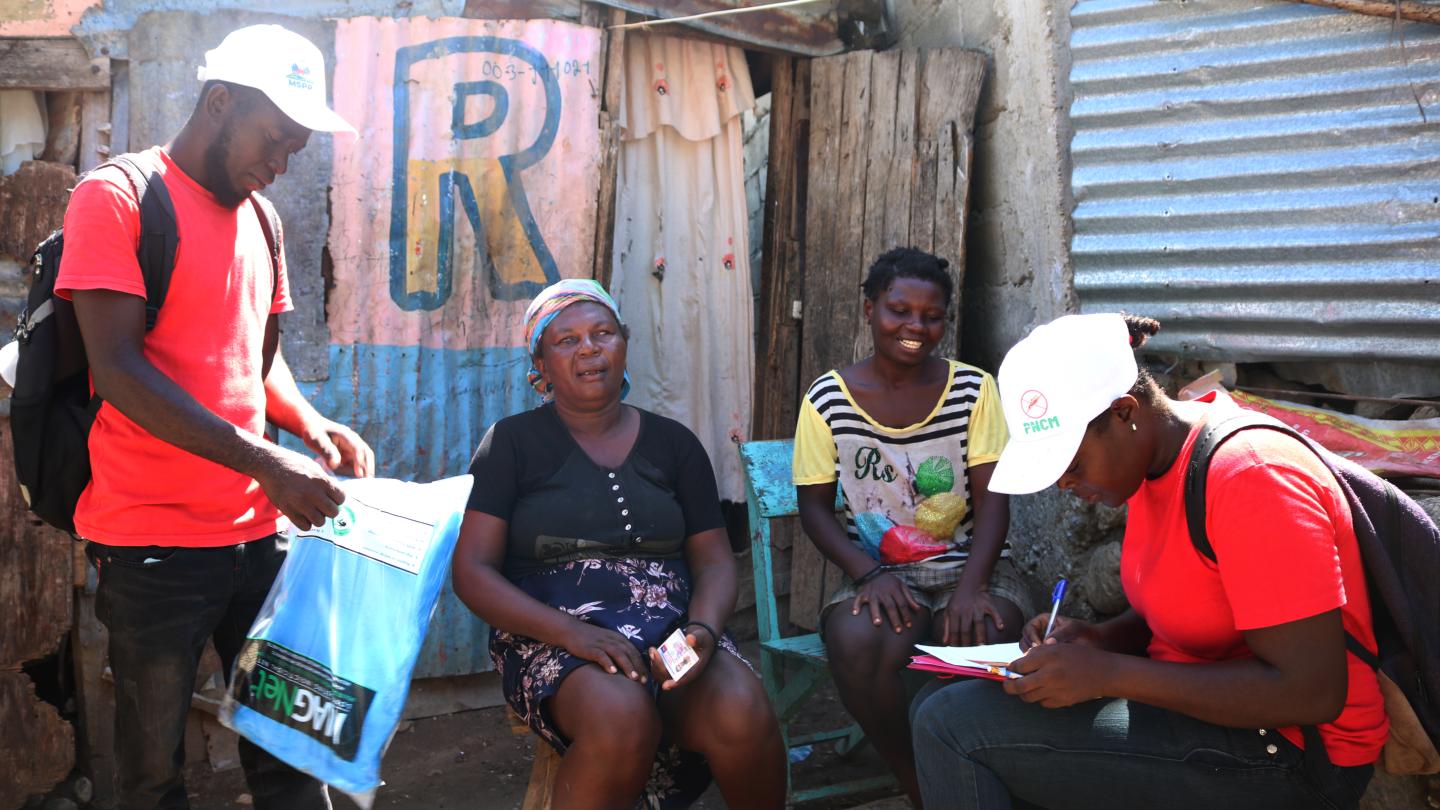Haiti proves resilient on path to zero malaria
November 3, 2023
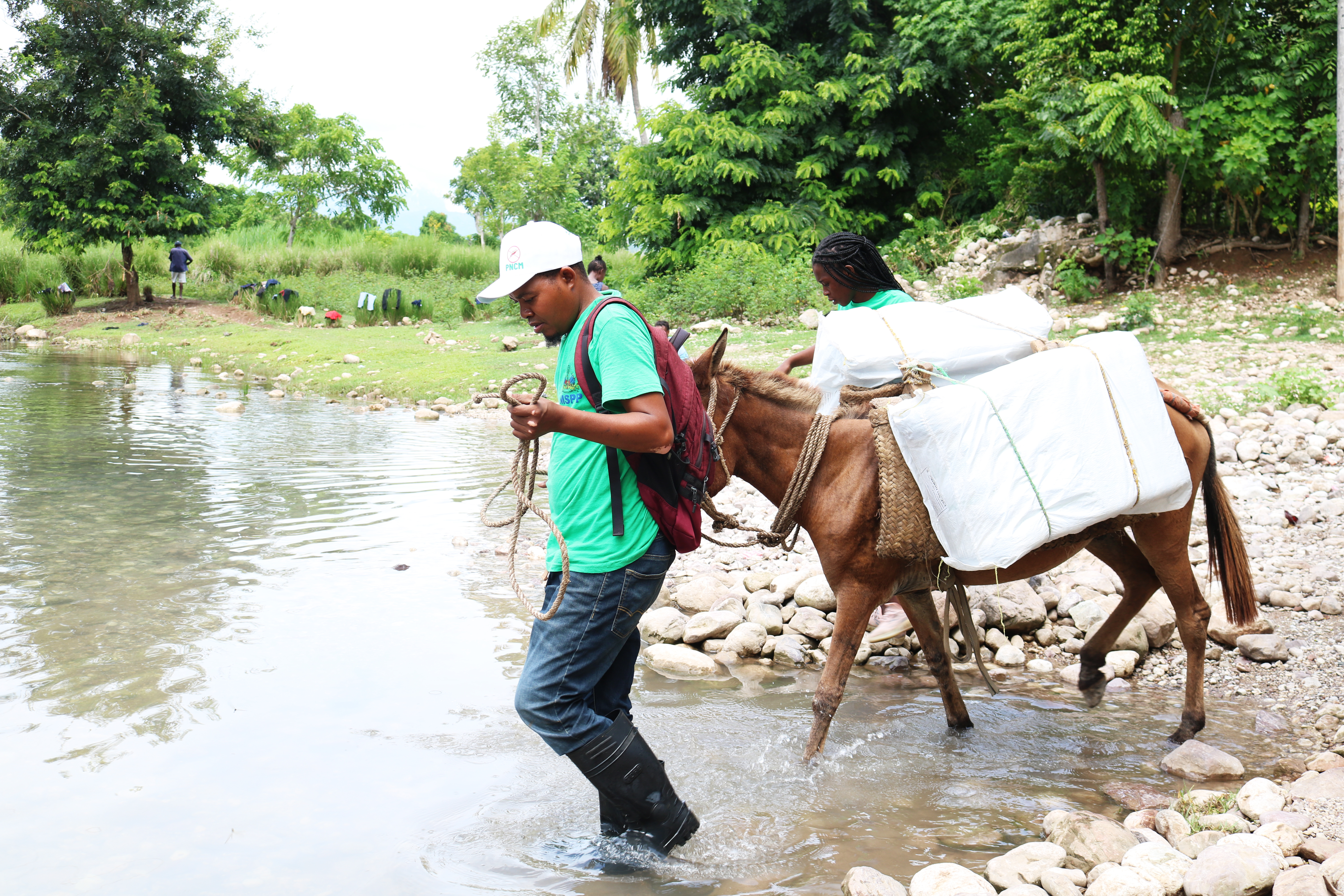
Dorce Jean Rislaire and his colleague rent a donkey to reach some of the most remote settlements in southwest Haiti with anti-malarial bed nets.
With a rented donkey and bed net packages in tow, Dorce Jean Rislaire and his colleague walk through lakes and up steep footpaths to reach some of the most remote settlements in southwest Haiti. This region represents one of the last malaria strongholds in the Caribbean. With limited access to healthcare, these communities depend largely on prevention tools like insecticide-treated bed nets to keep them protected from mosquito-borne diseases.
“We’re here to serve the population because of the mosquitoes who are threatening their lives,” Dorce said. “I’m thrilled to be here with you today, knowing that I’m giving my contribution to stop malaria.”
Over the past decade, Haiti made significant progress in driving down malaria cases and deaths. But a recent earthquake, tropical storms and ongoing civil unrest have complicated nationwide efforts to eliminate this mosquito-borne disease, destroying dozens of healthcare facilities and disrupting the flow of vital resources.
And yet Haiti’s malaria elimination campaign has proved resilient–thanks to hundreds of Haitians like Dorce who are going above and beyond to deliver bed nets and other malaria services.
Partnerships have also played an important role in this nationwide effort. A host of UN and NGO partners–including UNDP, the World Food Programme The Global Fund to Fight AIDS, Tuberculosis, and Malaria (The Global Fund), the Clinton Health Access Initiative, and United to Beat Malaria have helped sustain and expand malaria prevention, testing, treatment, and education, particularly in southwest Haiti where the malaria burden is greatest.
If Haiti can achieve malaria elimination, it would effectively make the Caribbean a malaria-free zone–a major global health milestone.
I’m thrilled to be here with you today, knowing that I’m giving my contribution to stop malaria.- Dorce Jean Rislaire
Towards elimination
Haiti came close to wiping out malaria in the 1960s and again in the 1980s. However, since then, these elimination efforts have suffered setbacks due to under-funding, political instability, and climate shocks. In the 1990s and 2000s, a lack of funding and reliable data hindered elimination efforts. Following a devastating earthquake in 2010, malaria cases increased by 40 percent.
The earthquake proved to be a watershed moment for malaria elimination. At the time, Haiti capitalized on global investments in its health system to refocus efforts on malaria elimination. It forged an agreement with neighbouring Dominican Republic and developed partnerships with The Global Fund, the Malaria Zero alliance, and other global stakeholders. Bolstered by these partnerships, Haiti saw an 80 percent decline in malaria transmission–from an estimated 85,000 cases in 2010 to 16,000 cases in 2018.
Unfortunately the past few years have presented immense challenges, from another earthquake in 2021 to political turmoil and surging gang violence. These events have made it extremely challenging to transport goods and deliver vital services, at a time when rates of disease and hunger are surging. By 2021, estimated malaria cases reached 22,500.
Despite these significant challenges, thousands of Haitians continue to track, test, treat, and prevent malaria in their communities, with support from national and global stakeholders. These efforts are needed to get back on track towards zero cases, especially in Grand’Anse and Sud, two departments that represented over 60 percent of the country’s malaria cases in 2018.
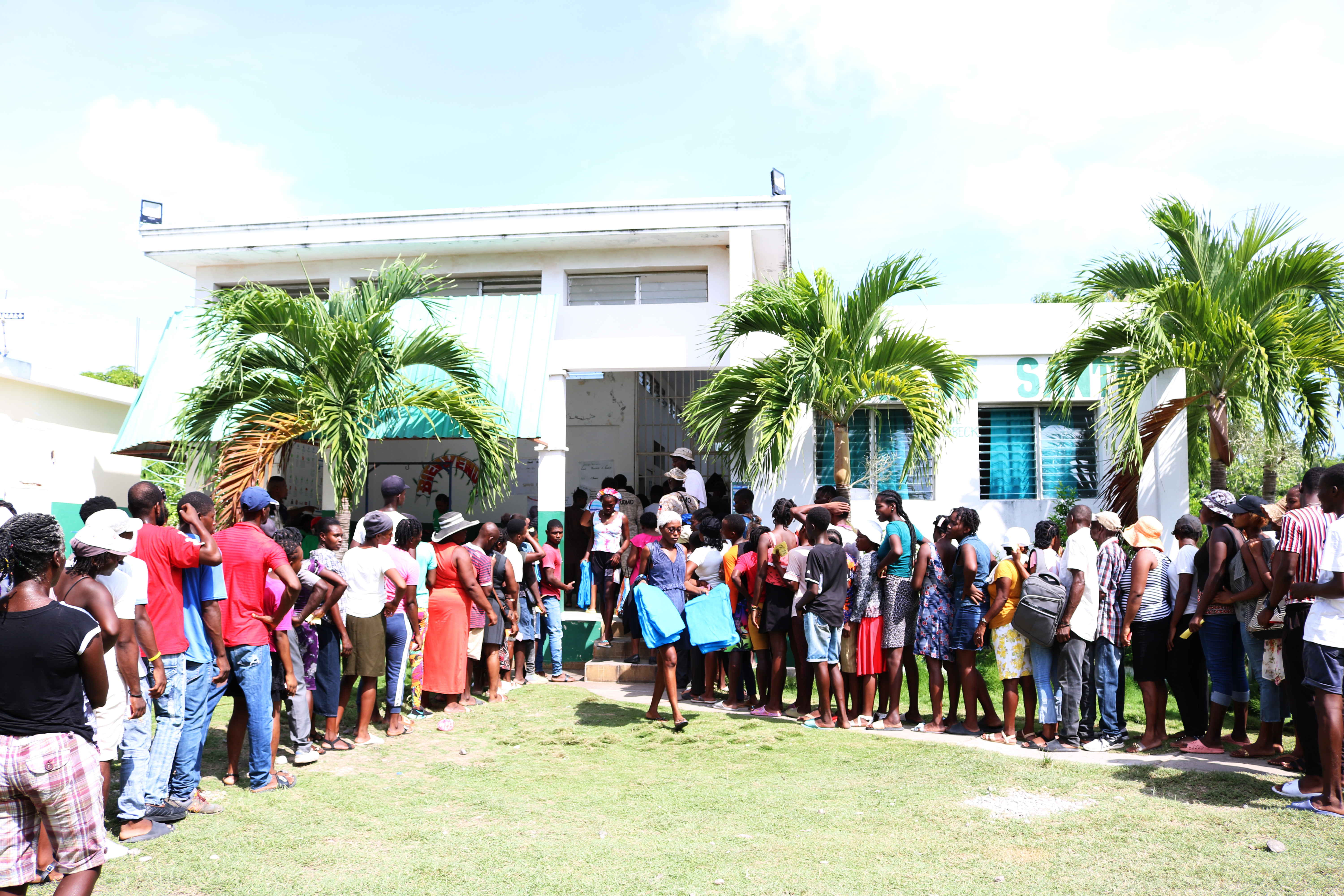
Despite significant challenges, thousands of Haitians continue to track, test, treat, and prevent malaria in their communities.
A region of varying extremes
Southwest Haiti is well-known for its rugged mountains, white sand beaches, and warm hospitality. The Grand’Anse and Sud departments are home to over 1.2 million people, most of whom live in small towns accessible only by dirt roads or footpaths.
A lack of access to food, healthcare, fuel, and other basic needs complicates daily life across this vast, rural landscape. The region has some of the highest rates of poverty and food insecurity in the western hemisphere.
Southwest Haiti also has the misfortune of lying within the Caribbean’s hurricane belt and on top of a major fault zone. The region bore the brunt of Hurricane Matthew in 2016, the 2021 earthquake, and Tropical Storm Grace in 2021–just days after the earthquake. These disasters destroyed hundreds of thousands of homes, decimated vital infrastructure, and damaged major supply roads. The flow of vital resources and supplies has been further disrupted by the recent political crisis and surging gang violence in and around Port-au-Prince, with reports of gangs establishing their presence in Grand’Anse and Sud.

These overlapping crises have heightened risk for disease outbreaks. Over the past year, cholera has re-emerged throughout the country, with nearly 50,000 suspected cases and 750 deaths as of June 2023. The conditions are ripe for a malaria resurgence as well, compounded by intense flooding in recent months that can fuel the mosquito population.
Due to monumental supply chain and transportation challenges, Haiti’s Ministry of Public Health and Population continues to work with global and UN partners to sustain vital malaria services, including bed net distributions and door-to-door malaria screenings. These reduce malaria transmission and illness, enabling Haitians to sustain livelihoods such as agriculture, the main economic activity in Grand’Anse and Sud. They also help lessen pressure on Haiti’s health workers and health system.
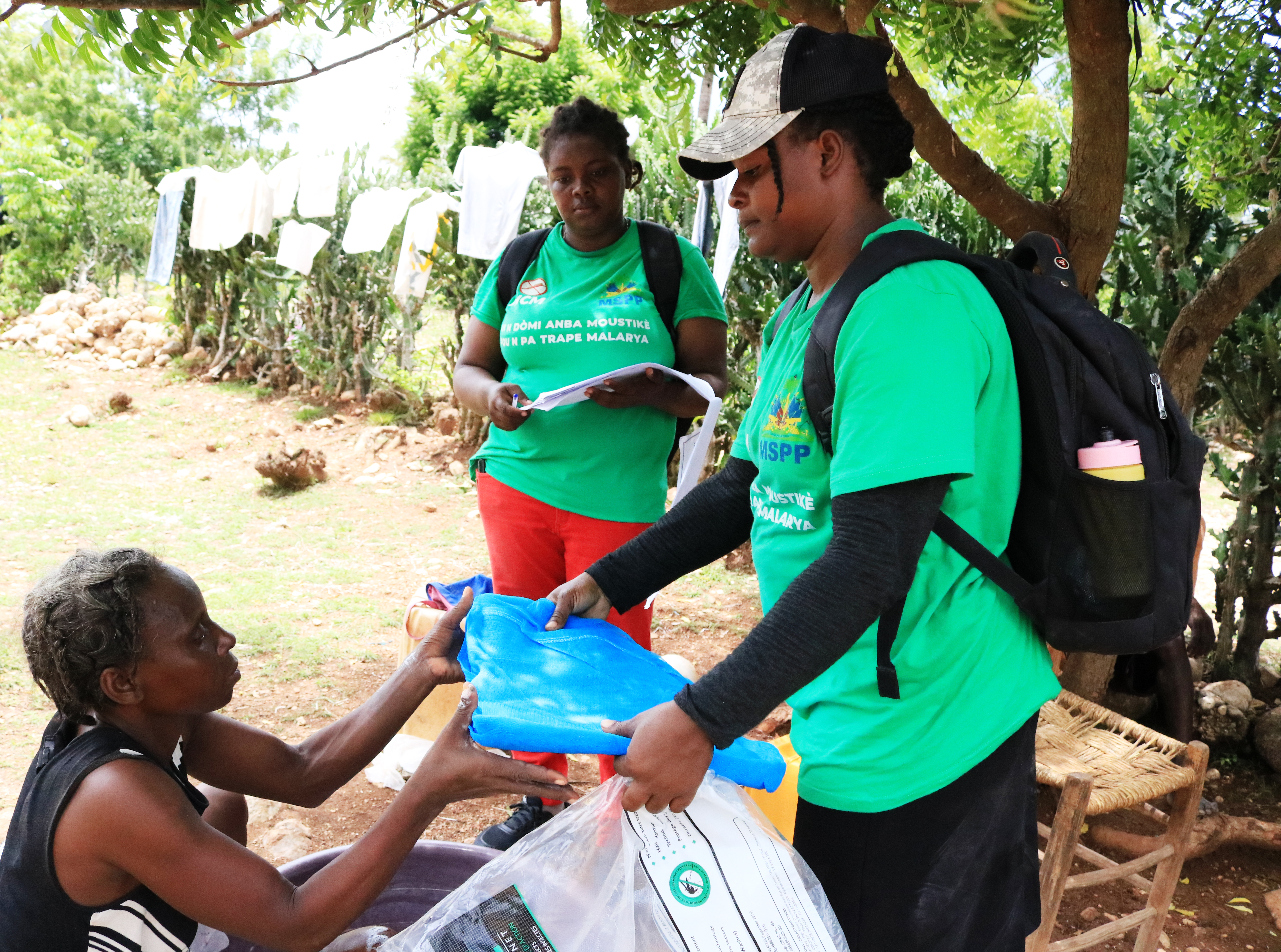
Kency Dorsainvil is a Communication Agent for Haiti’s National Malaria Control Program. She and her colleagues deliver bed nets, often by foot, to some of Haiti’s most remote and elevated communities.
It has a big impact, because the beneficiaries tell us that this is the very first time that aid reaches their remote location. A lot of people tell us that mosquitoes used to bite them, some say they often get sick with fever. I’m pleased that we’re bringing them those bed nets, so they will be able to protect themselves from the mosquitoes responsible for malaria.- Kency Dorsainvil, Communication Agent for Haiti’s National Malaria Control Program
Expanding bed net coverage
UNDP, Haiti’s National Malaria Control Programme and Action pour l’Éducation Sociale et la Santé (ACESS), a local NGO, are partnering with The Global Fund to provide over 950,000 bed nets this year, including to Grand’Anse and Sud. Delivered to households and community distribution points by a network of bed net distributors using trucks, motorbikes and donkeys to reach the last mile, the bed nets will help protect over 290,000 households from malaria. The recipients include households with pregnant women, newborns and children under five years, who face the highest chances of severe illness due to malaria.
The bed net distributors are supported by WFP Supply Chain, leveraging its network and expertise to reach the most remote communities. UNDP and Haiti’s National Malaria Control Programme are also piloting digitalization, enabling bed net distribution managers to more efficiently capture and securely store household and location data using KoboToolbox and ensure that bed nets reach the areas and households that need them. Data collected–including age, gender and the number of beds, pregnant women, and children below five years per household–will inform a follow-up survey to understand how people use their bed nets and access health services for malaria, which will further inform future malaria programming.
Besides the distribution, UNDP supports ACESS and community leaders to educate people about the causes of malaria and encourage people to sleep under their bed nets nightly to prevent infection.
Haiti’s malaria elimination strategy has also prioritized training and deploying community health workers who conduct mobile malaria screening, treatment, and case monitoring. Due to the lack of functioning health facilities across Haiti, particularly in Grand-Sud, community health workers play a critical role in preventing disease outbreaks in areas with low access to site-based care.
Through a partnership with the Clinton Health Access Initiative and Haitian Health Foundation, United to Beat Malaria is supporting a network of 35 community health workers who conduct door-to-door malaria testing, treatment, and education in some of the hardest-to-reach communities across Grand-Sud.
Community health workers are recruited from the communities in which they serve. They go to great lengths, often traversing steep and rugged terrains, to reach every at-risk household.
Equipped with tablet PCs, community health workers collect malaria case information that feeds into the DHIS-2 health information system. DHIS-2 monitors the prevalence and potential outbreaks of malaria at a community level, providing insights that make it easier to slow the spread before it erupts.
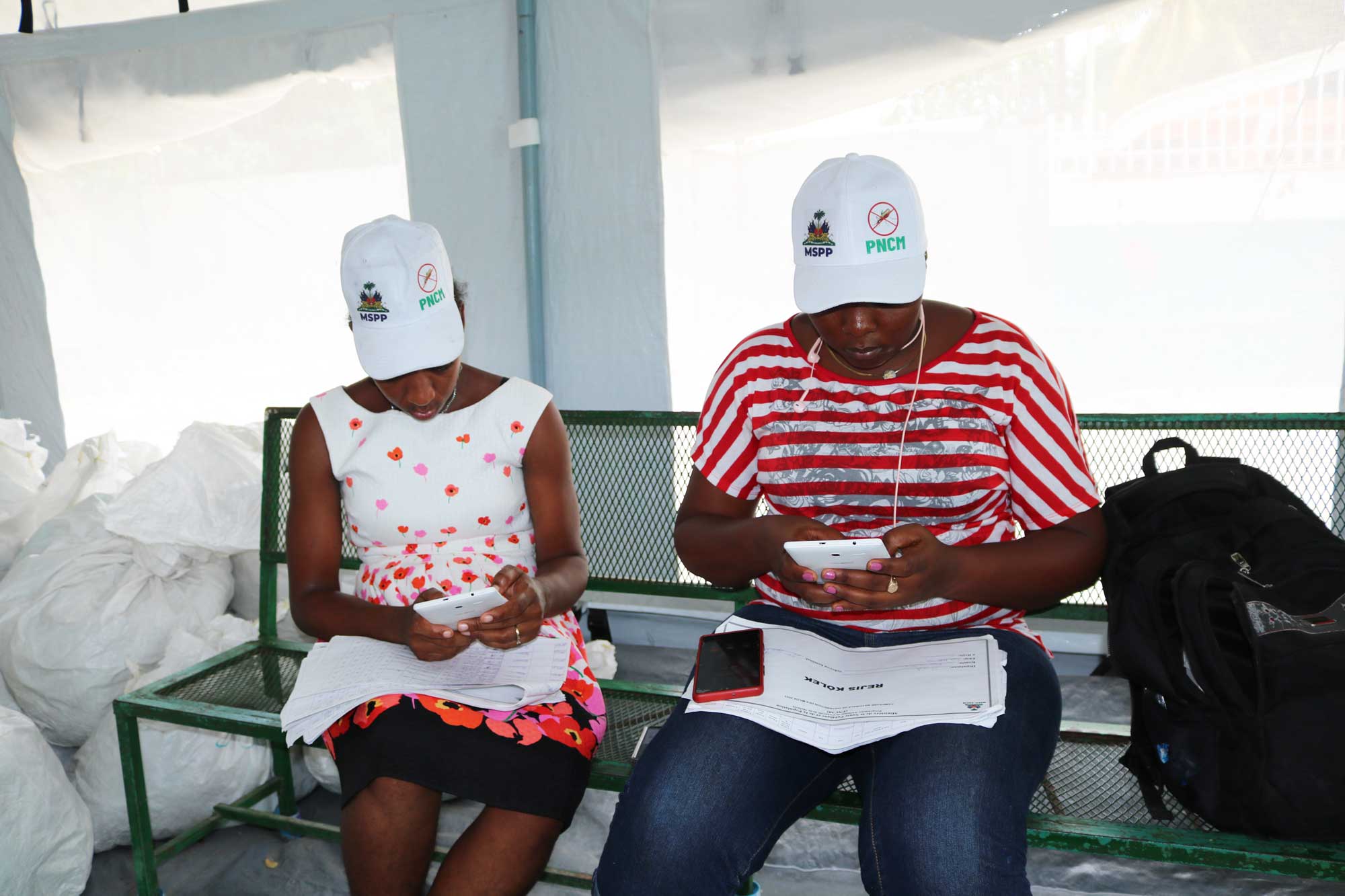
At the centre of Haiti's malaria elimination campaign are digital tools and systems that report malaria cases, detect potential outbreaks at the community level and track the coverage of bed nets.
Bed net distribution managers and a community health worker use tablets to more efficiently collect data and monitor malaria prevention and treatment efforts.
Reigniting progress towards zero malaria
Haiti’s malaria elimination effort has shown resilience in the face of monumental challenges. In collaboration with the UN, The Global Fund and NGO partners, Haiti’s Ministry of Public Health and Population and National Malaria Control Programme are maintaining the fight against malaria during this tumultuous period in Haiti’s history. Thousands of Haitians are increasing access to health services in their communities and working with partners on the journey to zero malaria and good health and well-being for all.
—
UNDP partners with The Global Fund, governments, civil society and other UN agencies, including the World Food Programme, to end HIV, tuberculosis and malaria and achieve a more equitable, healthier and sustainable future. The partnership strengthens national capacities to deliver essential health services, leave no one behind and build stronger and more resilient systems for health, including in countries facing insecurity, crisis or other capacity constraints. Learn more here.
United to Beat Malaria is a global grassroots campaign of the United Nations Foundation. For 16 years, United to Beat Malaria (previously known as Nothing But Nets) has helped protect more than 40 million people from malaria by providing bed nets and other life-saving tools, prioritizing the most vulnerable communities. The campaign also engages malaria champions who have successfully advocated for increased U.S. leadership and funding for global malaria programs. Learn more at beatmalaria.org.

 Locations
Locations